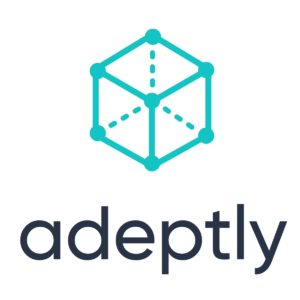Technology Is Transforming Learning
Learning technologies are a whole new world of digital learning and emotional engagement. Whatever the company, from private to public, non-profit to corporate, SMEs to mega conglomerates, the majority of organizations rely on their employees for growth, new ideas, and success. Employees need to be engaged, learning and growing their own skills to feel happy in their place of work. It's no secret that upskilling is one of the major trends that’s the backbone of successful leaders, ideas, and companies. Forget MOOCs (Multi Open Online Courses) and snazzy presentations, technology is serving up a world of new opportunities. Think serious learning games, Learning Management Systems, and Virtual Reality learning experiences. Here are 9 ways that technology is changing Learning and Development in the workplace.
1. Technology Enables And Encourages Personalized Learning
No matter how many employees you have in the same role, or with the same requirements in their role, each individual will have a different set of strengths and learning style. There is little point in treating Jess and Janice the same when one learns by doing and the other learns by reading, rewriting, and applying the same knowledge. Now multiply this personalization need by however many employees you have and here lies one the largest problems with Learning and Development (L&D) strategies: they tend to treat everyone the same.
Technology offers a viable solution. Learning Management Systems record individual performance and can be connected to a host of tools and resources, allowing individuals to learn at their own pace and in their own style. Authoring tools create learning environments, such as gamified content or serious learning games, which are excellent for personalized learning experiences. Learning games are designed and developed to cover any topic required. They tend to be easy to use for both the employer creating the game content and measuring learning outcomes and the employee accessing the program.
2. Technology Supports Increased Learning Through Flexible Learning
Technology is wonderfully flexible. Assume that your goal is to train 600 staff on the latest HR policy surrounding working from home rules and requirements. Forget in-person meetings or staff announcements, which are no longer possible under current COVID restrictions. What about a virtual broadcast? The majority of viewers won’t be engaged, won’t have their cameras switched on, and won’t be learning or retaining information. Cue the many questions that bosses have to deal with and the time wasted on finding the right member of HR to answer those.
How about a game? A learning environment whereby anyone of those 600 staff can log on within a set time frame, say, in the next working week, to complete their tasks. The game can be programmed to be as long as necessary; some employees will take longer than others, but on average, let's assume that within 60 minutes, an employee can play a serious learning game in which they learn the company’s new working from home policy. All the information is in the game. If learners get something wrong, they simply try that level in the game again. Streamlining learning for 600 members of staff through a learning game allows the HR team to ensure all information has been covered and understood. It also allows the HR team to quickly adjust their game if they spot that a lot of people encounter difficulty in a section.
Technology streamlines processes, cuts out the noise, and provides information in digestible chunks in formats that employees can actually remember and use. The time and money saved by using technology can free up resources for the HR team. They can now focus on tasks that require human thought-solutions, like how to individually support those whose health is affected by COVID and how to best assist individuals who have to return to the workplace to continue their jobs.
3. Technology Makes Learning Fun
Before you cringe or dismiss this as utter pseudo-nonsense, this aspect of technology is crucial to learning. If you can’t spark a genuine interest, capture and keep your audience engaged, or trigger some degree of curiosity, your training will not be effective. Using learning technologies can help you check all those boxes. Learning technologies promote interaction and responses from learners. Learner’s engagement levels tend to go up, whether using an interactive whiteboard, gamified learning content or playing a serious learning game. Research in 2014 concluded [1] that adding fun and enjoyment to learning boosted motivation and concentration. To secure a strong office culture and smarter, more engaged employees, consider adding fun learning tech to your workplace.
4. Learning Technologies Allow Peer and Social Learning
Remember the research from 2014 we just talked about? [1] That same research demonstrated that fun and enjoyment in training created a "socially connected learning environment," which was fundamental to reaching learning goals. Much of Gen-Z and millennials’ learning now comes from User-Generated Content. That’s right, TikTok is teaching and people are watching, listening, and learning by the millions, every minute. Much of TikTok’s addictiveness is in how the information is presented; small nuggets of knowledge relayed and explained with visuals, closed captions, song, dance, and music backgrounds.
When was the last time the head of Learning and Development at your company broke into a jig during a training session? Never? Before you send them off for jive lessons, think of the essence of TikTok’s success: it’s a community of users creating content, sharing knowledge, and supporting each other. Isn’t that what a workplace should look like? And yet, companies are known for organizational silos that can bring entire departments to a standstill. Use technology to streamline data storage, create safe environments for sharing information and upskilling employees, and encourage social connection and collaboration in the workplace.
5. Learning Technologies Invite AI And Adaptive Learning Into The Workplace
Artificial Intelligence (AI) in the workplace can seem daunting. It’s presumably expensive and difficult to work with. But before we even start arguing our point, what exactly is AI? According to the UK Government [2], Artificial Intelligence is “the analysis of data to model some aspect of the world. Inferences from these models are then used to predict and anticipate possible future events.”
In actual fact, AI can offer fantastic solutions for Learning and Development problems facing large corporations today. For example, let's imagine that a large firm with over 2,000 customer support staff requires training to upskill them on customer management in light of changes to GDPR regulations. Instead of mass emailing, workshops, webinars, and word documents filled with tasks, AI-backed Learning Management Systems can assist with delivering and measuring learning outcomes. Combine this with embedded content-rich game-based learning programs and you've just enabled the creation of unique learning paths for each individual, without any additional work required.
Continuing with our example, because of the AI-backed technology, the Learning and Development team can work with as many departments as necessary, from customer service to human resources, in order to see how each of the 2,000 staff is doing with their training. AI identifies the skill level of each individual by recording the data and creating easy-to-consume data models. This is where adaptive learning comes into play. AI allows for learning to be continually adapted to each individual and their needs. Let’s say a solid 50% of the 2,000 staff speed through the training, with minimal repeats and excellent results. Great. Training has been delivered and the required learning outcomes have been met for those individuals.
The remaining 1,000 staff can be supported in ways appropriate to their needs. Employees who struggle with organization, focus, or other barriers to learning can remain on the program and engaged in the content because the learning technology can adapt to deliver additional support as required. Better still, the technology can assist L&D teams to identify these barriers and provide appropriate support both on the program and on future projects. Learning technologies that are grounded in AI and adaptive learning are extremely effective for reaching learning goals in the workplace.
6. Learning Tech Gives Employees Instant Feedback
In today’s world, we increasingly expect everything to be instant. From instant coffee to instant messaging, we’re trained less and less in delayed gratification and can easily feel demotivated and disinterested in a task if we can’t get some form of gratification straight away. Learning technology can help. Forget annual one-to-ones, learning technology allows for smart applications, like productivity and time management software, or gamified learning content and serious learning games to give feedback as soon as the learner clicks "done." Employees like to see pie charts that show them they’re achieving, scorecards that show them they’re improving, and leaderboards that show them they’re winning.
It’s not just employees that want feedback; employers want to see L&D strategies delivering and teams improving too. The technology delivering the program, be it a standalone tool or a Learning Management System, often can collate and present data seamlessly, providing actionable feedback for L&D teams.
7. Learning Technologies Are Mobile
By next year, it’s predicted that 3.8 billion people will be using smartphones [3]. Mobile learning, or mLearning, is becoming increasingly prominent. Mobile phone uses range from social media like Twitter, YouTube, TikTok, and Instagram to learning platforms and workspaces. Many websites now have responsive designs, making them easily accessible on mobile devices. Many learning environments also allow for offline access or downloadable content so that learners can learn on-the-go. None of this would be possible without technology, and understanding the power of mLearning could have positive impacts on your Learning and Development outcomes.
8. Cloud-Based Learning Enables Access To Learning Anywhere In The World
Businesses are becoming progressively more reliant on "the cloud" for storage and communication. The cloud, which basically refers to servers, located in data centers around the world, and accessible over the internet, offers an excellent learning solution. Learning technologies are steering businesses away from restrictive, linear, and passive styles of training. Instead, training can be personalized, inclusive, and made accessible from anywhere in the world, thanks to the cloud.
9. Learning Technologies Can Be Time Efficient Solutions in Busy Work Schedules
It can take a lot of convincing for a time-pressured team to take on Learning and Development as a priority. It is a priority, and many employees see professional development as a vital aspect of their jobs. Data presented in 2019 by LinkedIn [4] showed that "94% of employees say they would stay at a company longer if it invested in their Learning and Development." So, if employees say they want to learn but they’re actively avoiding it when it is presented to them, this may mean one of a few things: the training is dull, is considered ineffective, or employees feel they have no time for it.
Learning technologies can solve all these problems. For the super busy, technologies offer flexible, cloud-based, personalized solutions that fit into schedules in the most effective way. Whether it be an intensive session of gameplay or a quick interactive quiz, learning technologies capture and hold attention, delivering results in the time frame available for learning. For companies whose employees are avoiding training because it’s so dull, this is a sign that the material probably isn’t being learned anyway, it’s just being ignored, or worse, memorized and quickly forgotten.
Learning technologies can completely reverse that by teaching complex and challenging (or just plain tedious, yet vital) information in exciting, context-relevant ways. Finally, if employees know they're going to do badly in a training session, either because they aren't confident group speakers, have never had brilliant fact recall or done exceptionally well on the topic, learning technologies can help. A Virtual Learning Environment can provide a space where shyness, embarrassment, and fear of failure are diminished and instead the opportunity of trying again where mistakes are made or working constructively and collaboratively on the same program is available.
In Summary: Learning Technologies Are Essential For Effective L&D Strategies
Data, technology, and plain old common sense all conclude that technology is essential, and when used correctly, can be massively helpful to L&D strategies in businesses. A workplace made up of happy, fulfilled, and curious employees, young and experienced, new and old, whatever their roles and responsibilities, will undoubtedly have a glowing Learning and Development program that challenges and upskills employees regularly.
Employers can now use data to correctly manage their employees' development and really see their investment in each employee come to fruition. Adopt technology into your L&D strategy and start cultivating a workspace filled with individuals who are committed to their job, proud to be a part of the company, and excited to come to work each day.
References:
[1] The impact of fun and enjoyment on adult’s learning
[2]Artificial intelligence: opportunities and implications for the future of decision making
[3] Number of smartphone users worldwide from 2016 to 2021
[4] 2019 Workplace Learning Report










